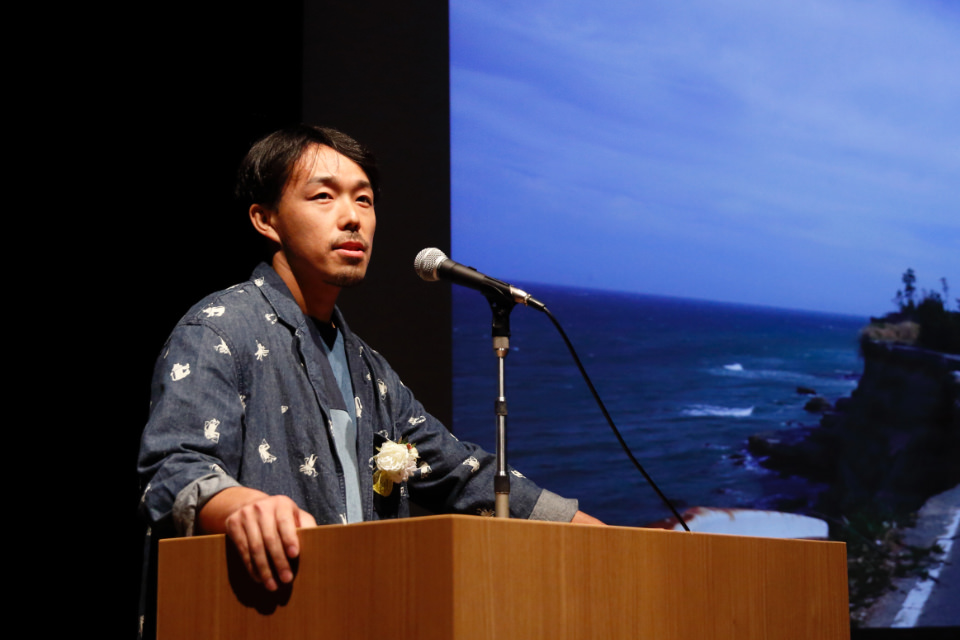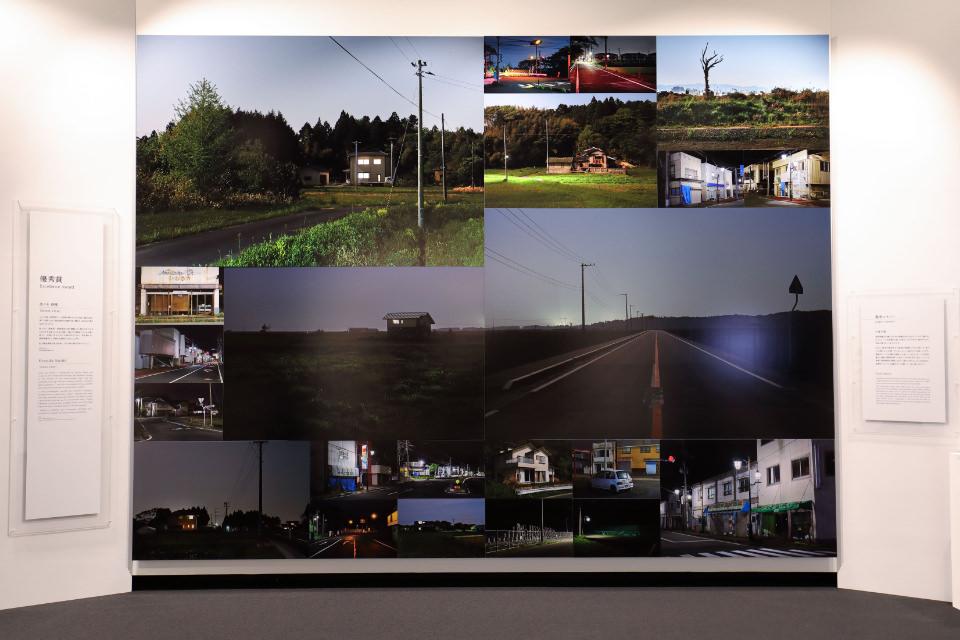PRESENTATION
With decontamination work well underway and most life services restored, the government lifted the evacuation order for parts of Namie, Tomioka, and Iitate — small towns in Fukushima Prefecture. Each year, I had visited sites of earthquake damage in Tohoku, so I had been waiting with some anticipation for the evacuation order to be lifted to visit these areas as well. What I found was the destruction of six years ago unchanged — roads still split and cracked from the earthquake; houses and cars still lying where they had been washed up by the tsunami. I felt like I had been drawn back to the time just after the earthquake. The reality of the landscape after the passage of six years that was manifested right before me was far more convincing than the unbelievable scenes immediately after the earthquake.
This photo was taken in Namie's Ukedo district where evacuation orders have been lifted. The glow you see in the left background are lights at the Dai-ichi Fukushima Nuclear Plant. I decided to shoot at night to capture the town's radiance. I thought the town's radiance would express the presence and movement of people. Another decision I made was to shoot with long exposures. Packing a lengthy period of 10 or 20 seconds into a single image is a unique type of expression only available with photography. It was my intention to portray sights that only photographs can capture.
The title was chosen to emphasize that all the locations I shot from were public streets. I shot from streets and adjoining land where anyone is free to enter, not evacuation zones isolated by barricades. If they so desire, anyone anytime can visit these places. So they are not in any way special places.
This collection of photos is not the end of this work. This photo, for example, was taken at a corner along Namie's shopping district. When I last visited in September, the building at the rear had already been torn down. Once the evacuation order was lifted, people who have given up on returning are deciding to demolish their own homes. So I hope to record and document what kind of light will illuminate the darkness at night and these spaces after houses are torn down. At the same time, the town has been building infrastructure at a feverish pitch ever since the evacuation order ended. So I also hope to document in photos how the nightscape will change in the coming years under the name of restoration. I also want to record areas along the coast where the scars of the earthquake and tsunami still remain in order to archive the memories of the time just after the earthquake.
Long exposures inevitably give a beautiful polish to photos. This was also done intentionally. The photos prized by our modern society and on social media, I feel, are transparently beautiful photos, by and large. I, too, was looking to take strikingly photogenic images. I wondered how people would react when they found out that the gorgeous photo they were looking at was actually caused by a nuclear plant accident. I didn't want to simply exhibit attractive photographs; I wanted photos that subvert the viewer's expectations and jolt their emotions. I wanted to convey what lies behind the beauty, what the essence of the photos is. This is my meager resistance and ironic stance in the face of today's society and social media obsession with pretty pictures.
What does restoration mean to you? Right after the earthquake, I had a profound revelation of just how utterly helpless and powerless I was. Because of that helplessness, I wasn't able to muster up the willpower to point my lens at the scenes immediately after the earthquake. What is restoration? I cannot give you a definitive answer to that question here today. Nevertheless, without succumbing to my helplessness, I plan to continue to grapple with the question of restoration through photography and through my life.


The photos are of public streets, but power lines and utility poles are seen everywhere. It feels to me that in photographing ordinary streets you were, in a way, photographing “corridors of electric power”. Was this intentional? One other thing. We can see what looks like trees or shrubs in the light of the remaining, isolated houses. What are they?
(Sakaki)
I deliberately tried to include utility poles wherever I could. I think they are very distinctive. I went out of my way to include utility poles with the hope that in the future street lights will shine from them. The lights you seen in houses are not lights, but light from nearby construction sights reflecting off window glass. I took these intentionally to show that the houses are made bright by reflections and not from people in the houses.

Judges’s Comment
Kunie Sugiura (selector)
When I realized these beautiful and romantic scenes of nocturnal darkness were scenes of Fukushima after the earthquake, I was shocked. I selected this work because I want others to see it. As you have said, the art of this work serves to further stress the horrible things, like death and fear, residing underneath these beautiful scenes.